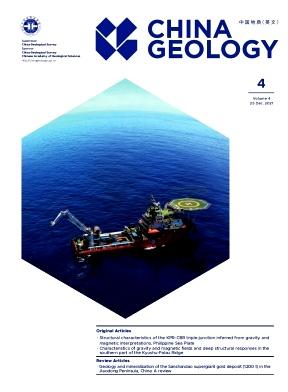Fluorine distribution, health risk, and geological and anthropogenic controlling factors in central Guizhou Province, Southwest China
IF 4.7
3区 地球科学
Q1 GEOSCIENCES, MULTIDISCIPLINARY
引用次数: 0
Abstract
Fluorine (F)-enriched soils, resulting from geogenic processes or superimposed by anthropogenic activities, have raised significant concerns due to their phytotoxicity and potential threats to human health. Soils in central Guizhou Province exhibit F enrichment, with a mean F concentration of 1067 mg/kg. However, the associated human health risks and geochemical mechanisms driving F enrichment in these soils remain insufficiently understood. In areas with a natural geological background, the average concentrations of F in rice, vegetables, drinking water, and ambient air are 1.54 mg/kg, 0.54 mg/kg, 0.16 mg/L, and 0.29 μg/m3, respectively. In contrast, samples collected near phosphorous chemical plants demonstrate elevated F concentrations: 1.78 mg/kg in rice, 1.53 mg/kg in vegetables, 0.20 mg/L in drinking water, and 11.98 μg/m3 in ambient air. Fluorine in soils was immobilized by apatite and clay minerals, and hardly transferred into water and crops. The fixation of F- by Ca2+ in water and by Fe/Al hydroxides and clay minerals in bottom sediment further reduces F concentrations in water. As a result, hazard quotient (HQ) values below 1.0 indicate negligible fluorine-related health risk in geological background regions. However, ambient air near phosphorous chemical plant exhibited a 41.3-fold increase in F concentration compared to geological background regions. Fluorine-laden emissions can be directly inhaled or deposited on vegetable leaves and orally ingested into human bodies. Improvement of F-rich waste gas disposal and restricted leafy vegetable cultivation are effective measures to reduce F health risks in phosphorous chemical plant regions.
贵州中部地区氟分布、健康风险及地质、人为控制因素
由地质过程产生或人为活动叠加的富氟土壤因其植物毒性和对人类健康的潜在威胁而引起严重关切。黔中土壤富F,平均富F浓度为1067 mg/kg。然而,相关的人类健康风险和驱动这些土壤中氟富集的地球化学机制仍然没有得到充分的了解。在具有自然地质背景的地区,水稻、蔬菜、饮用水和环境空气中氟的平均浓度分别为1.54 mg/kg、0.54 mg/kg、0.16 mg/L和0.29 μg/m3。相比之下,在含磷化工厂附近采集的样品显示F浓度升高:大米中为1.78 mg/kg,蔬菜中为1.53 mg/kg,饮用水中为0.20 mg/L,环境空气中为11.98 μg/m3。土壤中的氟被磷灰石和粘土矿物固定,几乎不转移到水中和作物中。水中的Ca2+和底部沉积物中的Fe/Al氢氧化物和粘土矿物对F-的固定进一步降低了水中的F浓度。因此,危害商(HQ)值低于1.0表明地质背景区域与氟有关的健康风险可以忽略不计。而在含磷化工厂附近的环境空气中,F浓度比地质背景区增加了41.3倍。含氟排放物可直接吸入或沉积在蔬菜叶片上,并经口摄入人体。改善富氟废气处理和限制叶菜种植是降低含磷化工厂区氟健康风险的有效措施。
本文章由计算机程序翻译,如有差异,请以英文原文为准。
求助全文
约1分钟内获得全文
求助全文

 求助内容:
求助内容: 应助结果提醒方式:
应助结果提醒方式:


